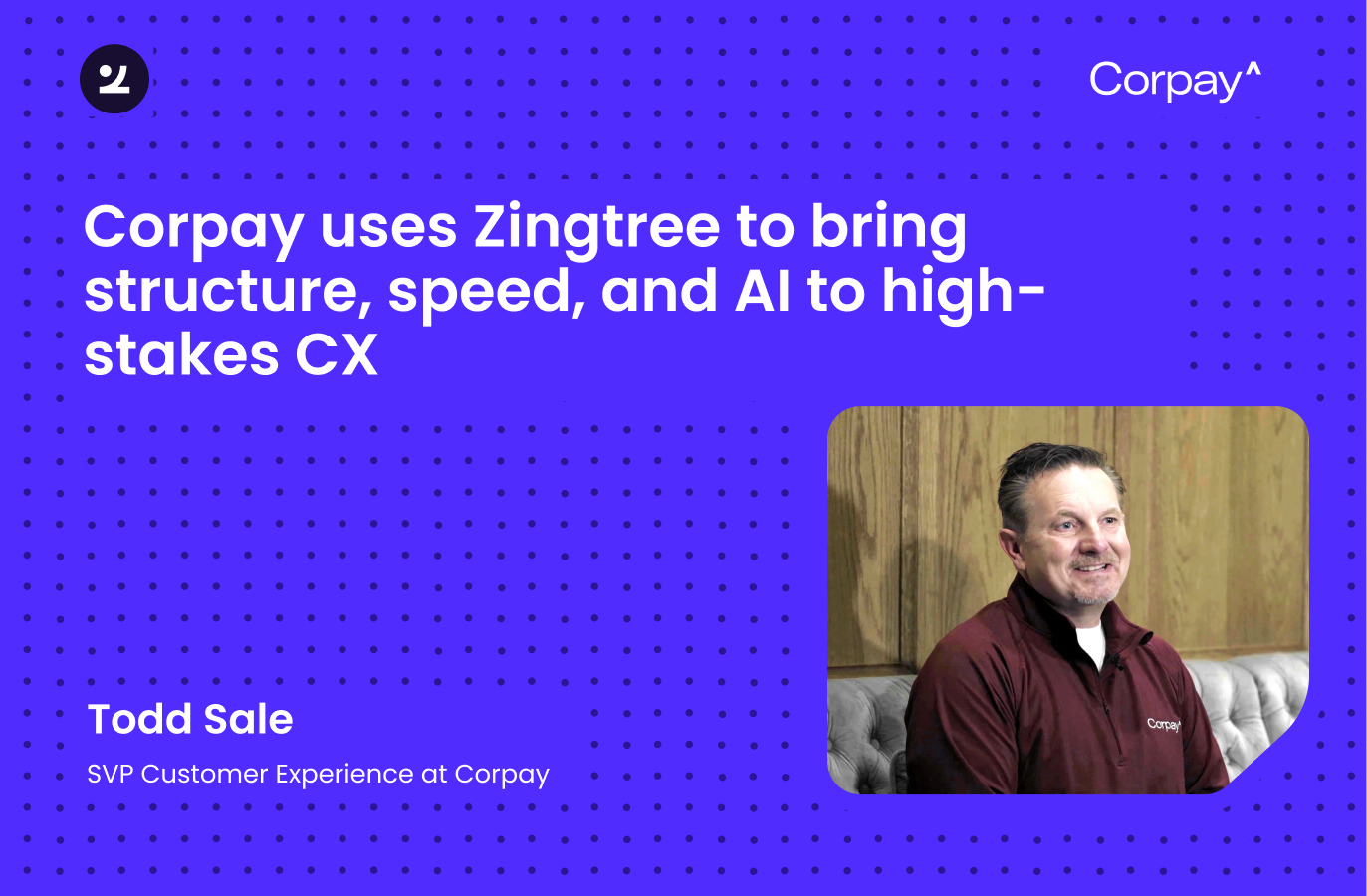How to Create Objection Handling Scripts for Outbound Calls
Check out our tips for responding to pushback on outbound calls, and discover how Zingtree can help you build flexible objection handling scripts.

How to Create Outbound Call Center Scripts with Objection Handling
Statistics show that 60% of customers say “no” four times before they say “yes,” so your outbound agents are likely to be used to their fair share of rejection. When it comes to outbound calling, dealing with regular setbacks is simply part of the game.
Dialling out countless prospecting calls in a row isn’t easy, but if your agents can be prepared to face any form of rejection, they’ll achieve higher success rates and feel more confident when they pick up the phone.
Help your sales reps turn a “no” into a “yes” with flexible sales objection scripts that prepare them with a response for every possible outcome. This helps ensure your agents stay compliant and on-message rather than getting caught flat-footed – and helps them feel supported in the process.
Whether you’re selling insurance or software, here are some of the most common sales objections and how your agents can respond.
What are some sales call objection examples?
“Can you send me an email?”
You’re in luck! This is the perfect opportunity to ask for more information so your agents can appropriately tailor their email. Plus, as they give more information, your team gains more opportunities to keep the conversation flowing.
E.g. “No problem. So I can give you all the relevant information, can you tell me…”
The next step is to set up a follow-up call:
E.g. “I’ll email that over today, shall we have a call in a few days’ time to discuss everything and I can answer any questions you have? How about on Thursday at 11am…”
“I can’t make a decision right now.”
Whether this is because of timing, budget, or simply because the real decision-maker isn’t on the line, your agents should try to get as much information as possible to understand what is holding the prospect back.
E.g. “I completely understand. Out of curiosity, why is this not the right time?”
“I don’t have time to talk at the moment.”
Is it really not a good time, or is the prospect not interested? Your agents shouldn’t be afraid to ask them.
E.g. “Of course! I’ve contacted you out of the blue. Is there a better time, or (you can tell me!) could it be that this is not interesting for you at the moment?
If now’s really not a good time, then that’s the perfect opportunity to set up another call. Agents should assure the prospect that it will only take a few minutes. If they’re still pushing back, the agent can ask why improving X is not a focus right now.
“I don’t think this is appropriate for us” or “I don’t think we need this.”
This offers a fantastic opportunity to educate the prospect, so your agent should try to find out why. Perhaps there is another product or service that you can offer them? As your agents provide more information, they have more opportunities to explain why your product or service is a good fit.
“This isn’t a priority right now.”
Your agent should ask the prospect to elaborate.
E.g. Why isn’t this important for you right now?
If they don’t want to share, the agent can try to set up an appointment at a later date.
“I’m not interested.”
While this might sound like a closing door, there’s still a good chance your agents can turn it around if they keep the conversation going.
E.g. So, is your focus elsewhere at the moment? Are you concentrating on X? That’s great, because our product has helped countless companies achieve exactly that…”
“What are your main goals or pain points at present?”
“We already have this product or use another provider.”
This is another opportunity to learn more about the prospect:
E.g. “That’s great! Sounds like you understand why this is so important/helpful. Out of interest, why does this work well for you at the moment?”
By finding out more information about the prospect’s pre-existing product or service, you can find gaps and sell your option as the superior alternative.
“It’s too expensive.”
Objections like this could simply require a more appropriate offer.
E.g. No problem, we have more affordable options/flexible payment plans.
Alternatively, the prospect may not see the true value in your product or service. Try to explain the long-term benefits, and how a smart investment now could save quite a bit in the long-run.
E.g. Firstly, thank you for your candor! Many of our customers had similar concerns at the beginning, but they quickly made savings of X, and the long-term benefits showed that...
Of course, sometimes a “no” really is a “no.” But even then, your agents can still gain business intelligence from the call. Try to see if they can glean any insights − why exactly is your product or service not interesting to the person on the other end of the line? Are you targeting the wrong sort of prospect? Does your messaging or value prop need work?
How to excel at objection handling at scale
Successful outbound sales agents have a response prepared for every realistic objection. With scalable, interactive agent scripts, you can work objection handling into your cold calling scripts − making the rest of your agents just as prepared as your highest performers.
Zingtree allows sales and customer service teams alike to be prepared for any direction the call may take, with our easy, choose-your-own-adventure style interface that guides them through every phone call. With seamless integrations, Zingtree can connect to any CRM or call center platform, allowing teams to view everything from the same screen and automatically generate notes from every call. Plus, with no coding required, Zingtree support and sales scripts can be launched and modified in just a few clicks. In addition to supporting your sales process, Zingtree can even help with your sales training, with powerful training scripts that get employees onboarded faster.
Want to find out how Zingtree can help your agents convert more outbound calls today? Request a demo from our friendly team, and we’ll show how Zingtree supports your precise use case.
Already using Zingtree? It’s easy to take advantage of purpose-built features that will make your outbound sales call scripts more flexible and more effective. Take a look at our step-by-step guide to see just how quickly you can get objection responses worked into your scripts today.


.svg)
.svg)
.svg)



